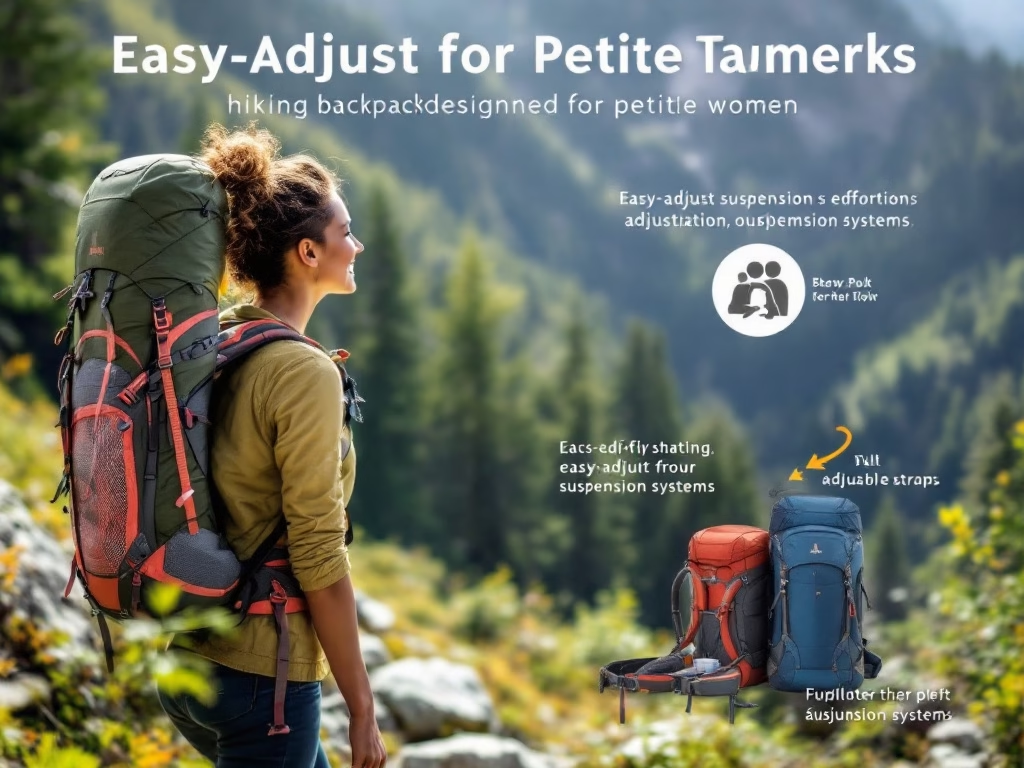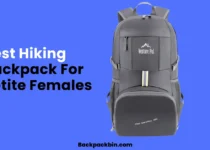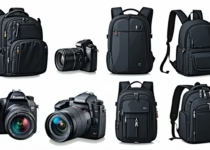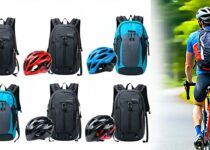Best Petite-Fit Packs With Easy-Adjust Suspension Systems

Looking for the Best Petite-Fit Packs With Easy-Adjust Suspension Systems? You’ve come to the right place. In this review we break down seven top backpacks built to hug your frame and let you tweak the fit on the fly. Whether you’re tackling day hikes or planning multi-night trips, you’ll find a pack that fits like a glove.
Compare Top Petite Packs
Here’s a quick glance at our favorite petite-fit backpacks featuring easy-to-use suspension systems. Use this table to narrow your options before diving into each review.
| Pack Model | Capacity | Suspension System | Adjustable Torso Range | Best Use |
|---|---|---|---|---|
| Gregory Jade 38 Women’s XS | 36 L | Perimeter frame, zip‐in liner | < 16 inches | Carry‐on, day & weekend |
| Gregory Deva 60 XS | 58 L | Perimeter frame, adjustable | < 16 inches | Multi‐day, heavy loads |
| Osprey Fairview 40 Women’s Travel | 40 L | Internal frame, harness slider | 13 – 20 inches | Trail to boardroom |
| Osprey Eja 58 Women’s Hiking | 58 L | AntiGravity mesh | 13 – 20 inches | Ventilated, lightweight |
| Osprey Aura AG LT 65 | 65 L | AntiGravity mesh | 13 – 20 inches | Week‐long, warm weather |
| REI Co-op Flash 55 Women’s | 55 L | Internal frame, custom harness | 13 – 20 inches | Ultralight, modular |
| ULA Equipment Ultra Circuit 68 | 68 L | Internal frame, removable lid | Custom | Thru-hiking, ultralight |
Each of these packs combines a petite-friendly harness with an easy-adjust mechanism so you can dial in the fit on the trail. Now let’s dive deeper into what makes each one tick.
Review Premier Petite Packs
Gregory Jade 38 Women’s XS
A true standout for petite hikers, the Gregory Jade 38 Women’s XS is sized for torsos under 16 inches while still offering 36 liters of storage. Built-in rain cover and front panel access make it a versatile choice on wet trails or crowded airports.
Key Features
- Dedicated women’s XS harness with zip-in floating liner
- Front U-zip panel for quick access
- Integrated rain cover in bottom pocket
- Generous hip belt pockets for snacks and tools
Pros And Cons
- Pros
- Perfect fit for sub-16-inch torsos
- Easy-to-reach hip belt pockets
- Front panel access speeds pack loading
- Cons
- 36 L may feel tight on longer trips
- Slightly heavier at 4 lb 6 oz
Gregory Deva 60 XS
Longtime favorite, the Gregory Deva 60 XS handles heavy loads with grace. Its robust suspension system and thick hip belt let you haul up to 55 pounds without shoulder strain.
Key Features
- Perimeter frame with women’s XS harness
- U-zip main compartment for full face access
- Thick, padded hip belt for even load transfer
- Multiple exterior pockets and attachment points
Pros And Cons
- Pros
- Exceptional comfort under heavy loads
- Well-organized exterior pockets
- Durable build for years of use
- Cons
- Bulkier pack profile
- 58 L can exceed carry-on limits
Osprey Fairview 40 Women’s Travel
The Fairview 40 blends trail-ready comfort with travel-friendly features. Its harness slider lets you tweak torso length as your day goes on.
Key Features
- Fold-away harness and hip belt for check-in
- Height-adjustable harness slider for 4 inches of fit range
- Lockable main compartment zippers
- Front stash pocket and side mesh pockets
Pros And Cons
- Pros
- Versatile for travel and light hiking
- Carry-on compliant on most airlines
- Quick harness stow option
- Cons
- Less padding than dedicated hiking packs
- Limited capacity for multi-day trips
Osprey Eja 58 Women’s Hiking
Designed for breathability, the Eja 58 uses an AntiGravity mesh back panel to keep you cool. Its easy-adjust harness slider shifts with one hand.
Key Features
- AntiGravity suspension with seamless mesh
- Height-adjustable torso with flip-up panel
- Removable floating top lid
- Dual ice-axe loops and trekking pole attachments
Pros And Cons
- Pros
- Best‐in‐class ventilation
- Lightweight at 3 lb 8 oz
- Intuitive harness adjustment on the go
- Cons
- Fewer external pockets
- Lid storage is minimalist
Osprey Aura AG LT 65
If ventilation and adjustability top your list, the Aura AG LT 65 delivers. The integrated hip belt ventilation channels airflow across your back.
Key Features
- AntiGravity mesh backpanel with curved frame
- Removable top lid and side access zip
- Slider harness adjusts up to 4 inches
- Deep hip belt pockets
Pros And Cons
- Pros
- Outstanding breathability
- Quick torso adjustment
- Ample storage for week-long trips
- Cons
- Higher price point
- Slightly heavier at 4 lb
REI Co-op Flash 55 Women’s
A budget-friendly ultralight, the Flash 55 pairs a mini-frame with a customizable harness. It’s perfect if you want to shave ounces off your pack weight.
Key Features
- Internal frame sheet nested in mesh back
- Custom shoulder harness and hip belt
- Roll-top closure for variable volume
- Multiple external pockets and daisy chains
Pros And Cons
- Pros
- Super light at 2 lb 5 oz
- Modular harness fits a wide range of torsos
- Affordable price
- Cons
- Less structure under load
- Rain cover sold separately
ULA Equipment Ultra Circuit 68
Crafted for thru-hikers, the Ultra Circuit 68 is fully customizable. Its removable lid and modular harness let you fine-tune carry and balance.
Key Features
- Internal aluminum frame and floating lid
- Removable hip belt and shoulder straps
- Wide gear compartment with side mesh pockets
- Lightweight but strong 100d nylon construction
Pros And Cons
- Pros
- Highly modular for personal fit
- Ultralight at 2 lb 13 oz
- Generous 68 L capacity
- Cons
- No built-in rain cover
- Requires time to custom configure
Consider Fit And Comfort
Getting the right pack is about more than looks. You need a system that hugs your back, supports your hips, and stays stable over rocky terrain.
Measure Your Torso Length
Torso length, not height, dictates fit. Grab a friend, a soft tape, and follow this guide on how to measure torso length for hiking packs when you’re petite. Once you know your measurement, match it to the adjustable range of each harness.
Evaluate Hip Belt Fit
Most of your pack’s weight sits on your hips, so a well-fitting belt is crucial. Look for curved, contoured hip belts that wrap around your bone structure without pinching. If you need fine-tuning, see our tips on how to adjust hip belts for a short torso on the trail.
Factor In Women-Specific Design
Women-specific packs often feature narrower shoulder straps, shaped harnesses, and belt pockets positioned for easier access. If you want more on that, check out why women-specific hiking packs often fit petite frames better.
Optimize Suspension Adjustments
Even the lightest pack can feel awkward if the suspension isn’t dialed in. Here’s how to tweak it yourself.
Use Harness Sliders
Most easy-adjust systems use a slider or a buckle that moves up and down. Unlock it, slide the harness to fit your torso length, then lock it in place. You can fine-tune as you hike if your shoulders feel too tight or too loose.
Tune Load Lifters
Load lifters are the small straps that angle your pack in toward your shoulders. Tighten them just enough so the pack sits close to your back without tipping you forward. Learn more about their role in understanding load lifters and their importance for petite hikers.
Readjust Hip Belts on Trail
After your first mile or two, stop and feel for any pressure points. A slight shift in the hip belt can relieve discomfort. Keep your hips squared, then re-clip the belt so it rests on the top of your pelvic bone.
Prepare Your Packing Setup
A well-fitting pack can still feel uncomfortable if you load it poorly. Use these tips to keep weight balanced and accessible.
Balance Your Load
Pack heavier items close to your back and as high as possible. This center-of-gravity trick helps the suspension system work more efficiently and reduces sway on uneven ground.
Employ Compression Straps
Compression straps stabilize gear inside your pack. Cinch them down once your bag is full to eliminate empty spaces. For a deeper dive, see how to use compression straps to reduce pack bulk for short frames.
Stow Rain Gear Compactly
Keep rain covers or shells in an easily reachable spot, like a hip belt pocket or top lid compartment. For more packing hacks, check how to fit rain gear compactly in packs for petite hikers.
Hydration and Accessory Placement
Aim to slot your water reservoir in a spot that won’t shift when you move. Side pockets work well for quick-grab items. If you need guidance, take a look at how to fit hydration systems into small hiking backpacks.
Frequently Asked Questions
How Do I Measure My Torso Accurately?
Stand straight, have a friend mark the C7 vertebra at the base of your neck, then find the iliac crest on your pelvis. Measure between those points with a soft tape.
What Capacity Should I Choose for Petite Day Hikes?
For day hikes, 30 – 40 L is usually enough to hold water, snacks, extra layers, and first aid. If you tend to carry more gear, bump up to 40 – 50 L. See how to choose the right capacity backpack for petite day hikes.
Can I Adjust Suspension Mid-Hike?
Absolutely. Most packs let you slide the torso adjustment or retighten load lifters on the go. A quick stop every few miles keeps you comfortable.
Are There Packs with Built-In Rain Covers?
Yes. Models like the Gregory Jade 38 and Deva 60 include integrated rain covers. Always check the spec sheet before you buy.
How Heavy Should My Loaded Pack Be?
Aim for no more than a quarter of your body weight. If your pack is too heavy, swap out nonessentials or choose an ultralight model like the REI Co-op Flash 55.
How Often Should I Re-Tweak My Pack Fit?
Every couple of hours or after major elevation changes. Terrain shifts can pull your pack out of alignment.
Conclusion:
Choosing the right petite-fit pack with an easy-adjust suspension system is all about match, comfort, and convenience. From day hikes in the Gregory Jade 38 to thru-hiking in the ULA Ultra Circuit 68, these picks offer adjustable harnesses and supportive frames that scale to shorter torsos. Measure your torso, dial in your suspension, balance your load, and you’re set for countless miles of pain-free trekking. Now grab your favorite model, hit the trail, and enjoy the perfect fit.


